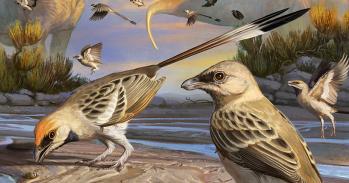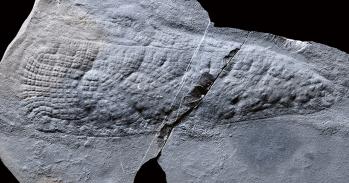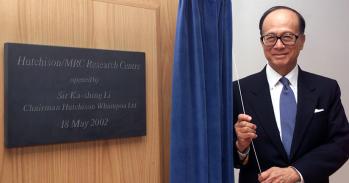
New research shows for the first time the intricate three-dimensional structure of the backbone in the earliest four-legged animals (tetrapods).
New research shows for the first time the intricate three-dimensional structure of the backbone in the earliest four-legged animals (tetrapods).
The results of this study force us to re-write the textbook on backbone evolution in the earliest limbed animals
Stephanie Pierce
Research published today (Sunday 13 January 2013) in the journal Nature documents, for the first time, the intricate three-dimensional structure of the backbone in the earliest four-legged animals (tetrapods).
The international team of scientists, led by Dr Stephanie Pierce, from the University's Zoology Department and the Royal Veterinary College, and her Cambridge colleague Professor Jennifer Clack, bombarded 360 million-year-old early tetrapod fossils with high energy synchrotron radiation. The resulting high resolution X-ray images allowed the researchers to reconstruct the backbones of the extinct animals in exceptional detail.
The backbone, also known as the spine or vertebral column, is a bony structure found in all tetrapods, along with other vertebrates such as fish. It is formed from many elements or vertebrae all connected in a row - from head to tail. Unlike the backbone of living tetrapods (eg humans), in which each vertebra is composed of only one bone, early tetrapods had vertebrae made up of multiple parts.
"For more than 100 years, early tetrapods were thought to have vertebrae composed of three sets of bones - one bone in front, one on top, and a pair behind. But, by peering inside the fossils using synchrotron X-rays we have discovered that this traditional view literally got it back-to-front," said Dr Pierce.
For the analysis, the European Synchrotron Radiation Facility (ESRF) in France, where the three fossil fragments were scanned with X-rays, used a new protocol to reveal tiny details of the fossil bones buried deep inside the rock matrix.
Using this new technology, the team of scientists discovered that what was thought to be the first bone - known as the intercentrum - is actually the last in the series. And, although this might seem like a trivial oversight, this re-arrangement in vertebral structure has over-arching ramifications for the functional evolution of the tetrapod backbone.
"By understanding how each of the bones fit together we can begin to explore the mobility of the spine and test how it may have transferred forces between the limbs during the early stages of land movement," explained Dr Pierce.
But the findings didn't end there. One of the animals - known as Ichthyostega - was also found to have an assortment of hitherto unknown skeletal features including a string of bones extending down the middle of its chest.
"These chest bones turned out to be the earliest evolutionary attempt to produce a bony sternum," said Professor Clack. "Such a structure would have strengthened the ribcage of Ichthyostega, permitting it to support its body weight on its chest while moving about on land."
This unexpected discovery supports recent work done by the same authors that showed Ichthyostega probably moved by dragging itself across flat ground using synchronous 'crutching' motions of its front legs - much like that of a mudskipper or seal.
Pierce adds: “The results of this study force us to re-write the textbook on backbone evolution in the earliest limbed animals."
The next step, the researchers say, is to understand how the backbone aided locomotion in these early tetrapods using sophisticated biomechanical analysis.
The study was funded by the Natural Environment Research Council. Additional support was provided by the European Research Council and the ESRF, of which the Science and Technology Facilities Council (STFC) is the UK shareholder.
Copy provided by Royal Veterinary College.
This work is licensed under a Creative Commons Licence. If you use this content on your site please link back to this page.





